Colloquia and Seminars (Previous Years)
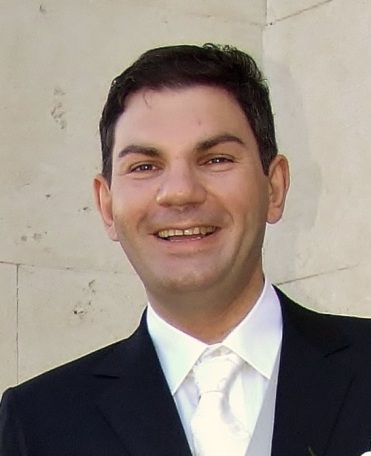
Dr. Rosario Gianluca Pizzone obtained his Master's degree in 1998 and his Ph.D in 2002 both from the University of Catania, Italy. He then worked as a postdoctoral research associate for 4 years before becoming a permanent research scientist at the INFN - National Laboratory of the South in Catania. He won an Italian Physics Society Award for young scientists in 2001 and 2002. He also spent a sabbatical working as a Research Scientist in the nuclear astrophysics group at the Cyclotron Institute of Texas A&M University in College Station in 2011/2012. Dr. Rosario Gianluca Pizzone conducts his research in experimental nuclear astrophysics in the INFN group for Nuclear Astrophysics and has devoted his activity to the study of the lithium problem, the electron screening effect and the Trojan Horse method. The activity was carried out in several laboratories across Italy, Europe, USA and Japan. He currently is a lecturer of Medical Physics at the University of Catania (since 2012) and was a lecturer of Wave Physics between 2005 and 2009. He is also a member of the Scientific and Organizing Committees for nuclear astrophysics schools. He is a member of the Italian Physics Society and serves as a referee for international journals as well as in the project evaluation committee of the Italian Ministry of Science. More information about Dr. Pizzone and his research can be found at http://www.lns.infn.it/index.php?option=com_content&view=article&id=292&catid=126&Itemid=113
Abstract:
Nuclear Astrophysics deals with the generation of energy in the Universe as well as with the formation of nuclear species. The nuclear inputs are crucial to fully understand the astrophysical processes still going on in di_erent scenarios, e.g. stellar objects. Among them the most relevant quantity is the reaction rate which is strongly correlated to the cross section, in a perfect link between the physics of the "micro-world" and that of the "macro-world". Direct cross sections measurements in the last decades have highlighted a new problem related to the di_culty of overcoming the coulomb repulsion between nuclei and also to the partial shielding of the interacting nuclei due to the presence of the "electron screening" in the laboratory measurements. These are the reasons that led to a considerable growth on interest in new experimental techniques. Results concerning the bare nucleus cross sections measurements will be shown in several casesof astrophysical interest. Several astrophysical implications will be discussed.
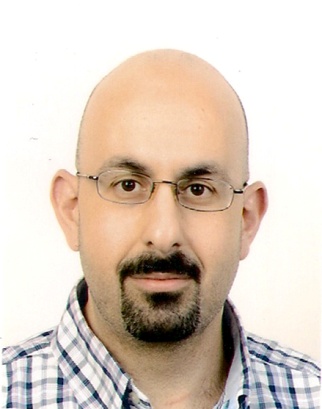 Prof. George Shubeita received his B.Sc. degree in Physics from Birzeit University and his PhD in physics from the University of Lausanne in Switzerland in 2002. He was Paul Siegler/Agouron postdoctoral fellow of the Helen Hay Whitney Foundation at the University of California Irvine before joining in 2007 the faculty of the department of Physics at the University of Texas at Austin. His current research is on cell physics with focus on molecular motor protein function, regulation, and relation to disease. More information about Prof. George Shubeita and his research can be found at: http://chaos.utexas.edu/people/faculty/george-t-shubeita
Prof. George Shubeita received his B.Sc. degree in Physics from Birzeit University and his PhD in physics from the University of Lausanne in Switzerland in 2002. He was Paul Siegler/Agouron postdoctoral fellow of the Helen Hay Whitney Foundation at the University of California Irvine before joining in 2007 the faculty of the department of Physics at the University of Texas at Austin. His current research is on cell physics with focus on molecular motor protein function, regulation, and relation to disease. More information about Prof. George Shubeita and his research can be found at: http://chaos.utexas.edu/people/faculty/george-t-shubeita
Abstract:
Much like a city, living cells are organized and maintaining their organization is essential for their proper functioning. To position micrometer-sized vesicles and organelles inside the cell at the right place and in a timely fashion the cell cannot rely on diffusion as that would be extremely slow, especially in the crowded cellular environment. The cell achieves precise positioning of these cargos by shuttling them along a network of intracellular roads (microtubules and actin filaments), using a set of molecular motor proteins (kinesin, dynein and myosin). These motor proteins use the energy released by ATP hydrolysis to generate the force they need to haul the cargos; thus, measuring that force amounts to directly probing their function. I will describe the methodology we developed to measure the pico-Newton forces motors exert in their native cellular context. Measuring motor forces enabled us to count the number of motors hauling individual cargos and test physical models of intracellular transport. Given the ubiquity of molecular motors, failure in regulating their function can result in disease. Neurodegenrative diseases such as Alzheimer’s, Huntington and Ameotrphic Lateral Sclerosis, for example, have been linked to motor malfunction. By measuring motor forces in a fruit fly model for Alzheimer’s disease, we established the mechanism by which the motor regulator GSK-3 alters transport when found in Alzheimer’s-level abundance. Our findings have implications on the development Alzheimer’s drugs targeting GSK-3.
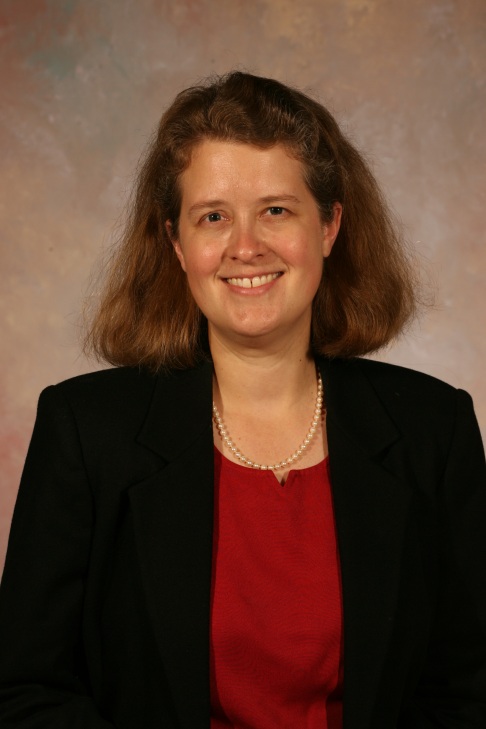 Prof. Linda Olafsen completed her Bachelor's degree in Physics at Princeton University in 1991. She then went to graduate school in Physics at Duke University, earning her Master's degree in 1994 and completing her Ph.D. in 1997. Dr. Olafsen accepted a National Research Council postdoctoral research associateship at Naval Research Laboratory in Washington, D.C. for two years before taking a faculty position at the University of Kansas in 1999, first as an Assistant Professor, receiving an ONR Young Investigator Award in 2001, and being promoted to tenured Associate Professor in 2005. She joined the faculty at Baylor University as an Associate Professor in 2006, where she has continued her research in mid-infrared semiconductor lasers, particularly through a novel tunable/resonant optical pumping technique. An active member of the Materials Research Society, she currently chairs the Book Review Board for the MRS Bulletin and is Chair of the Congressional Visits Day subcommittee, having visited Congress annually since 2007 to discuss the importance of sustained and predictable funding for basic research. She also is a member of APS, IEEE, OSA, SPIE, DEPS, and ACS, and she has been a member of the Laser Electro-Optics Technology and Nanotechnology Advisory Committee at Texas State Technical College (Waco, TX) since 2009. She is a member of the GRE Physics Committee of Examiners. More information about Prof. Olafsen and her research can be found at
Prof. Linda Olafsen completed her Bachelor's degree in Physics at Princeton University in 1991. She then went to graduate school in Physics at Duke University, earning her Master's degree in 1994 and completing her Ph.D. in 1997. Dr. Olafsen accepted a National Research Council postdoctoral research associateship at Naval Research Laboratory in Washington, D.C. for two years before taking a faculty position at the University of Kansas in 1999, first as an Assistant Professor, receiving an ONR Young Investigator Award in 2001, and being promoted to tenured Associate Professor in 2005. She joined the faculty at Baylor University as an Associate Professor in 2006, where she has continued her research in mid-infrared semiconductor lasers, particularly through a novel tunable/resonant optical pumping technique. An active member of the Materials Research Society, she currently chairs the Book Review Board for the MRS Bulletin and is Chair of the Congressional Visits Day subcommittee, having visited Congress annually since 2007 to discuss the importance of sustained and predictable funding for basic research. She also is a member of APS, IEEE, OSA, SPIE, DEPS, and ACS, and she has been a member of the Laser Electro-Optics Technology and Nanotechnology Advisory Committee at Texas State Technical College (Waco, TX) since 2009. She is a member of the GRE Physics Committee of Examiners. More information about Prof. Olafsen and her research can be found at
http://www.baylor.edu/Physics/index.php?id=68670
Abstract:
While scientists pursue three primary semiconductor systems to generate mid-infrared (3-5 µm) laser radiation, antimonide-based heterostructures that employ an indirect (type-II) quantum well configuration have proved to be the most promising approach in this wavelength range. However, there remain challenges in this system in achieving excellent performance at high operating temperatures. Recent results in optical pumping of type-II antimonide-based semiconductor lasers with W-shaped quantum wells will be presented, as will new projects employing electrically injected interband cascade lasers as well as semiconductor lasers with integrated graphene transparent contacts. These projects have a common theme designed to reveal the optoelectronic mechanisms that limit high temperature operation in antimonide-based type-II W lasers.
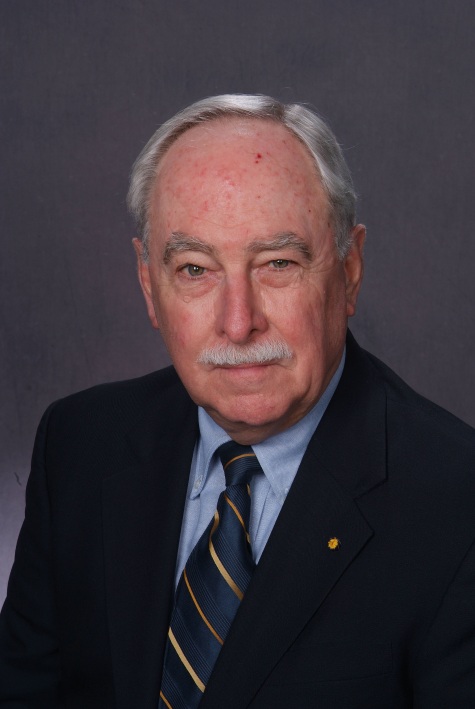 Prof. Poston received his Ph.D. in Nuclear Engineering from Georgia Institute of Technology in 1971. He has been at Texas A&M University since 1985 and during his tenure there he served 10-years as Department Head of the Department of Nuclear Engineering. Prior to coming to Texas A&M, he was on the faculty of the Georgia Institute of Technology, was a Section Head at the Oak Ridge National Laboratory, and earlier was an Experimental Reactor Physicist with the Babcock and Wilcox Company in Lynchburg, Va. Currently he serves as a Vice President of the National Council on Radiation Protection and Measurements (NCRP) responsible for the Program area Committee on Nuclear and Radiological Security and Safety. He has chaired three national scientific committees of the NCRP which produced reports for first-responders to radiological terrorism events. Dr. Poston has been elected Fellow of the Health Physics Society, the American Nuclear Society and the American Association for the Advancement of Science. More information about Prof. Poston and his research can be found at
Prof. Poston received his Ph.D. in Nuclear Engineering from Georgia Institute of Technology in 1971. He has been at Texas A&M University since 1985 and during his tenure there he served 10-years as Department Head of the Department of Nuclear Engineering. Prior to coming to Texas A&M, he was on the faculty of the Georgia Institute of Technology, was a Section Head at the Oak Ridge National Laboratory, and earlier was an Experimental Reactor Physicist with the Babcock and Wilcox Company in Lynchburg, Va. Currently he serves as a Vice President of the National Council on Radiation Protection and Measurements (NCRP) responsible for the Program area Committee on Nuclear and Radiological Security and Safety. He has chaired three national scientific committees of the NCRP which produced reports for first-responders to radiological terrorism events. Dr. Poston has been elected Fellow of the Health Physics Society, the American Nuclear Society and the American Association for the Advancement of Science. More information about Prof. Poston and his research can be found at
http://energyengineering.org/expertise/poston,john
Abstract:
Even though we might not realize it, the threat of terrorism is on the minds on many U.S. citizens. But, the topic is not well understood and the general public is subject to a great deal of misinformation and misunderstanding especially when it comes to terrorist uses of radiological or nuclear material. This presentation is intended to address those concerns by providing an overview of the potential use of radioactive materials and nuclear devices in terrorist activities. A short tutorial will be presented on nuclear weapons, including improvised nuclear devices. The lecture will include discussions of other uses such as in a radiological dispersal device and a radiation exposure device and will attempt to clarify a number of misconceptions.
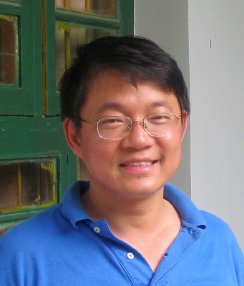
Prof. Dong Lai received his B.Sc. in Physics from the University of Science and Technology of China and his Ph.D. in theoretical physics from Cornell University in 1994. He was a Richard C. Tolman postdoctoral fellow at Caltech before joining in 1997 the faculty of the Astronomy Department at Cornell, where he is now a full Professor. He was an A.P. Sloan research fellow, and has held visiting appointments at Institute for Advanced Study, Kavli Institute for Theoretical Physics, CITA, National Astronomical Observatory of China, etc. His current research focuses on compact objects (neutron stars, black holes and white dwarfs) and exoplanets. More information about Prof. Lai and his research can be found at
http://astro.cornell.edu/members/dong-lai.html
Abstract:
The merger of binary systems containing neutron stars, black holes or white dwarfs can lead to various extreme phenomena that are observable throughout the universe. I will discuss recent works on merging neutron star/black hole binaries and white dwarf binaries, focusing on dynamical processes in the pre-merger phase, gravitational waves and potential constraint on nuclear matter.

Professor Gregory A. Parker received a B.S. in Chemistry and a B.S. in Mathematics in 1973 and received his Ph.D in Chemistry from Brigham Young University in 1976. He was a postdoctoral fellow first at the California Institute of Technology from 1976 to 1978 and then at the University of Chicago from 1978 to 1980. In 1980 he accepted a faculty position in the Department of Physics and Astronomy at the University of Oklahoma. He is now a George Lynn Cross Professor and Department Chair of the Homer L. Dodge Department of Physics and Astronomy at OU. Over the years, Prof. Parker and his collaborators have developed theoretical and numerical methods for accurately studying three-particle systems of real physical interest. Their reactive scattering theory, hyperspherical coordinates, and discrete variable representation has allowed them and others to solve the Schrödinger equation with minimal approximations. Currently, Prof. Parker and his collaborators are interested in ultracold collisions of alkali atoms with alkali dimers. This interest is the result of the phenomenal success in the experimental formation of ultracold atoms and molecules. They have recently shown that pulsed lasers of moderate intensities used during the collision can lead to the efficient production of ultracold molecules. More information about Prof. Parker and his research can be found at http://www.nhn.ou.edu/faculty/parker/
Abstract:
We will present a novel time-dependent hyperspherical coordinate method for studying the dynamics of triatomic systems. The use of wave packets provides information over a distribution of scattering energies and one can also visualize the wave packet as it enters the interaction region and then returns to the asymptotic region where it is analyzed. This ability to visualize the wave packet as it propagates in time offers an intuitive, physically meaningful picture of the dynamics. Using adiabatically adjusting, principal axes hypersperical (APH) coordinates increases the computational efficiency, since the triatomic PES becomes symmetric, reducing the amount of coordinate space required to represent the evolving wave packet. Rearrangement processes are important in the areas of cold and ultracold collisions, coherent control, combustion chemistry, atmospheric chemistry, three-body recombination, collision induced dissociation, photo-dissociation and photo-association.

Professor Matt Benacquista received his B.A. in physics from Reed College in 1982 and his Ph.D. in physics from Montana State University in 1988. He taught in Montana for 18 years before moving to the Center for Gravitational Wave Astronomy at UT Brownsville in 2006. He had a Fulbright Fellowship to the University of Trento in 2004. He has been interested in ultra-compact binary systems containing white dwarfs, neutron stars, or black holes as sources of gravitational radiation for space-based gravitational wave observatories and has worked on the LISA project since 1995. His interest has also led him to study dynamical systems such as globular clusters as pathways to the formation of relativistic binaries. He is the author of a textbook: "An Introduction to the Evolution of Single and Binary Stars".
Abstract:
The Galactic population of close white dwarf binaries will be the dominant source of gravitational radiation in the millihertz band accessible with space-based gravitational wave observatories. Gravitational wave detections of these systems will be complementary with the expected electromagnetic observations coming in the near future from observatories such as GAIA. I will briefly describe gravitational radiation emission and detection in order to discuss the expected selection effects in gravitational radiation observations of Galactic white dwarf binaries. The talk will conclude with a comparison between the capabilities of GAIA and gravitational wave observatories and a discussion of how these can be used together to obtain a better understanding of close white dwarf binaries.

Prof. Gay Stewart received her Ph.D. in experimental physics from the University of Illinois at Urbana-Champaign in 1994. As a concerned parent, she shifted her research to science education. In 1995 she began a National Science Foundation (NSF)-funded course and curriculum development project. Success promoted further change in the department, with the average number of graduates increasing by more than a factor of 10. She has over 30 publications, and has given numerous invited talks at the American Physical Society (APS) and other national meetings. She serves on the editorial board of a science education research journal and on the Project Kaleidoscope Faculty for the 21st Century. She served on the APS Committee on Education, the APS Executive Board and Council, and on the AP Physics Curriculum Development Committee. She is past-chair of the APS Forum on Education Executive Committee. She was co-chair of the NSF-funded initiative to redesign AP Physics, and is currently co-chair of the AP Physics 2 Curriculum Development and Assessment Committee. Under her direction UA was one of four physics programs for the NSF/American Association of Physics Teachers (AAPT), "Shaping the Preparation of Future Science Faculty," and one of six initial primary program institutions of the APS/AAPT/American Institute of Physics (AIP) "Physics Teachers Education Coalition." Both programs are still thriving past funding. Currently funded efforts include the NSF Math Science Partnership, The College Ready in Mathematics and Physics Partnership, and UTeach Arkansas. She has been PI or Co-PI on almost 20 proposals, totaling over $17M in external funding. She has received several teaching and advising awards, including the Fulbright College Master Teacher award, and the CASE Arkansas Professor of the Year award. She is a fellow of the APS, and president elect of AAPT. More information about Prof. Stewart and her research can be found at http://www.uark.edu/depts/physinfo/
Abstract:
At some level, the performance of students in a science class must depend on what is taught, the information content of the materials and assignments of the course. The introductory calculus-based electricity and magnetism class at the University of Arkansas is examined using a catalog of the basic reasoning steps involved in the solution of problems assigned in the class. These fundamental steps are used to quantify the distribution of informational content within the different elements of the course: laboratory, lecture, reading, and homework. This distribution of content is compared with the instructional outcomes measured by the Conceptual Survey of Electricity and Magnetism and by course exams to determine the relative efficacies of the various mechanism of presenting the information. Using this characterization technique, an exceptionally detailed picture of the information flow and the information structure of the class can be produced. Variation of the types and the amount of information presented is analyzed over multiple semesters.
 Dr. Shlomo received his PhD from the Weizmann Institute of Science, Israel (1973) in Nuclear Theory and was a Post-Doctoral fellow at Michigan State University, a Minerva Fellow at the Max Planck Institute, Heidelberg, Germany, and a visiting Scientist at CEN-Saclay, France and at the Niels Bohr Institute, Denmark, before taking the position of a Research Scientist at the Cyclotron Institute, Texas A&M University, in 1981 and since 1984 he has been a Senior Scientist and Group Leader. He was also a visiting Scientist/Professor at GSI, Germany, Grenoble, France, the Niels Bohr Institute, Denmark, RIKEN, Japan, and at Ben-Gurion University, Tel-Aviv University and the Weizmann Institute of Science, Israel. He is a Fellow of the American Physical Society and of the Institute of Physics (UK) and recipient of the S. Davydov Award of the Ukrainian Academy of Science, The Kreitman Award of Ben-Gurion University, and the Eminent Scientist award of RIKEN, Japan. Dr. Shlomo carries out research in Nuclear Theory. He has made outstanding contributions to microscopic theory of nuclear structure and reactions, elaborating on the effects of nuclear correlations on a wide range of phenomena. In particular, he has developed a widely used fast and exact method for incorporating the particle continuum in the Hartree-Fock based random phase approximation (HF-RPA) theory for giant resonances (GR); shown, for the first time, that the Coulomb energy problem (i.e., the Nolen-Schiffer anomaly) is due to long-range-correlations and that the so-called EMC effect is due to nuclear binding. More recently, Dr. Shlomo’s seminal work on GR provided valuable physical insight into their properties and led to the resolutions of the long-standing discrepancies concerning the value of the nuclear matter incompressibility coefficient, K, which is needed for extending our knowledge of the equation of state around the saturation point of nuclear matter.
Dr. Shlomo received his PhD from the Weizmann Institute of Science, Israel (1973) in Nuclear Theory and was a Post-Doctoral fellow at Michigan State University, a Minerva Fellow at the Max Planck Institute, Heidelberg, Germany, and a visiting Scientist at CEN-Saclay, France and at the Niels Bohr Institute, Denmark, before taking the position of a Research Scientist at the Cyclotron Institute, Texas A&M University, in 1981 and since 1984 he has been a Senior Scientist and Group Leader. He was also a visiting Scientist/Professor at GSI, Germany, Grenoble, France, the Niels Bohr Institute, Denmark, RIKEN, Japan, and at Ben-Gurion University, Tel-Aviv University and the Weizmann Institute of Science, Israel. He is a Fellow of the American Physical Society and of the Institute of Physics (UK) and recipient of the S. Davydov Award of the Ukrainian Academy of Science, The Kreitman Award of Ben-Gurion University, and the Eminent Scientist award of RIKEN, Japan. Dr. Shlomo carries out research in Nuclear Theory. He has made outstanding contributions to microscopic theory of nuclear structure and reactions, elaborating on the effects of nuclear correlations on a wide range of phenomena. In particular, he has developed a widely used fast and exact method for incorporating the particle continuum in the Hartree-Fock based random phase approximation (HF-RPA) theory for giant resonances (GR); shown, for the first time, that the Coulomb energy problem (i.e., the Nolen-Schiffer anomaly) is due to long-range-correlations and that the so-called EMC effect is due to nuclear binding. More recently, Dr. Shlomo’s seminal work on GR provided valuable physical insight into their properties and led to the resolutions of the long-standing discrepancies concerning the value of the nuclear matter incompressibility coefficient, K, which is needed for extending our knowledge of the equation of state around the saturation point of nuclear matter.
Abstract:
The development of a modern and more realistic nuclear energy density functional (EDF) for accurate predictions of properties of nuclei is the subject of enhanced activity, since it is very important for the study of properties of rare nuclei with unusual neutron-to-proton ratios that are difficult to produce experimentally and likely to exhibit interesting new phenomena associated with isospin, clusterization and the continuum. We will describe a method for determining the parameters of the EDF, associated with the Skyrme type effective interaction, by carrying out a Hartree-Fock based fit to extensive set of data of ground state properties and giant resonances and imposing additional constraints, such as the Landau stability conditions. We will then present results of our calculations of properties of nuclei and nuclear matter (NM) by employing our newly obtained EDF and address, in particular, the equation of state (EOS) of symmetric and asymmetric NM. The EOS of NM is an important ingredient in the study of various properties of nuclei, heavy-ion collisions, supernovae and neutron stars. Accurate values of the NM incompressibility coefficient, K, and the symmetry energy coefficient, J, are needed in order to extend our knowledge of the EOS in the vicinity of the saturation point of the symmetric NM and for asymmetric NM. We will discuss the current status of K and J, as deduced from properties of isoscalar and isovector giant resonances of various multipolarities.
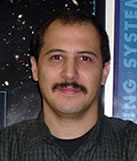 Dr. Mustapha Ishak is currently an Associate Professor of Physics and Head of the Cosmology Group at The University of Texas at Dallas. He received his Ph.D. in 2002 in Cosmology and General Relativity from Queen's University at Kingston, Canada. He then worked as a research associate at Princeton University on theoretical Cosmology with comparison to some observational data before joining the faculty at UT-Dallas in 2005. He was recipient of the Fellowship for Excellence in Research and Leadership from the Natural Sciences and Engineering Research Council of Canada (NSERC) and the 2007 Award for Outstanding Teacher of the Year from the School of Natural Sciences and Mathematics at UT-Dallas. Prof. Ishak published 24 scientific papers on the specific problem of cosmic acceleration with over 700 citations. Dr. Ishak’s current research interests are in Cosmology and General Relativity. His research has been funded by NASA, DOE and NSF. More information about Prof. Ishak and his research can be found at http://www.utdallas.edu/nsm/physics/faculty/ishak-boushaki.html
Dr. Mustapha Ishak is currently an Associate Professor of Physics and Head of the Cosmology Group at The University of Texas at Dallas. He received his Ph.D. in 2002 in Cosmology and General Relativity from Queen's University at Kingston, Canada. He then worked as a research associate at Princeton University on theoretical Cosmology with comparison to some observational data before joining the faculty at UT-Dallas in 2005. He was recipient of the Fellowship for Excellence in Research and Leadership from the Natural Sciences and Engineering Research Council of Canada (NSERC) and the 2007 Award for Outstanding Teacher of the Year from the School of Natural Sciences and Mathematics at UT-Dallas. Prof. Ishak published 24 scientific papers on the specific problem of cosmic acceleration with over 700 citations. Dr. Ishak’s current research interests are in Cosmology and General Relativity. His research has been funded by NASA, DOE and NSF. More information about Prof. Ishak and his research can be found at http://www.utdallas.edu/nsm/physics/faculty/ishak-boushaki.html
Abstract:
For more than a decade, cosmological observations indicate that the expansion of the universe is accelerating. These observations led to the Nobel Prize in Physics in 2011 to Perlmutter, Schmidt, and Riess. Cosmic acceleration and the questions associated with it are at the heart of one of the most challenging and puzzling problems in cosmology and physics. Naturally “why” is one of the larger questions. Is it because of a repulsive dark energy pervading the universe, or perhaps an extension to General Relativity that takes effect at cosmological scales of distance, or because the expansion rate of space-time is uneven from one region to another in the universe? I will review these possibilities and discuss what recent results, including ours, have to say about it.
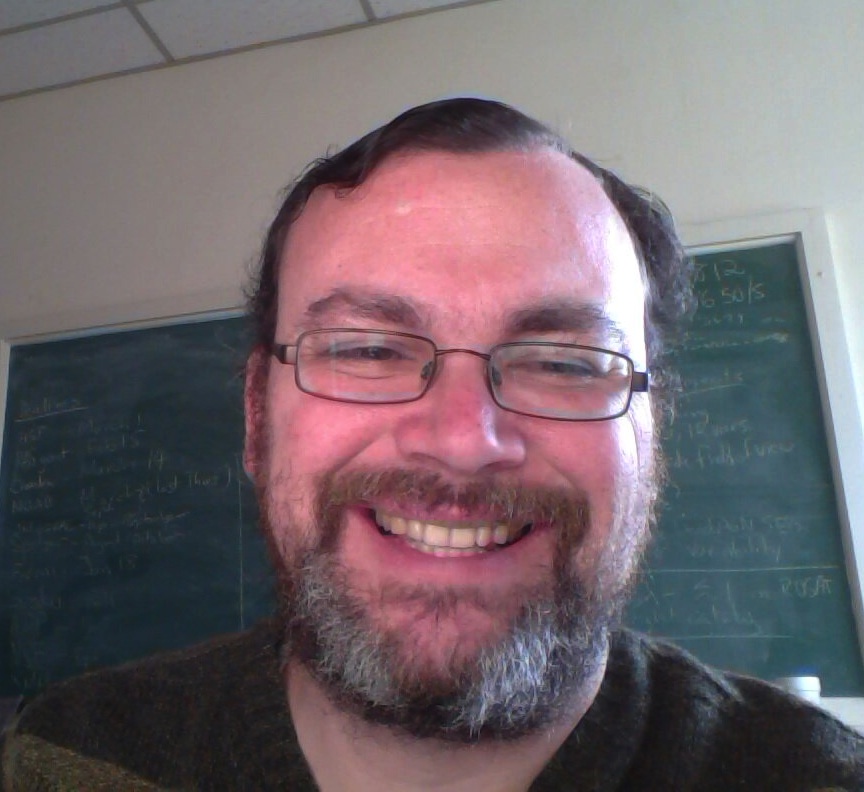 Prof. Tom Maccarone earned his B.S. in physics from the California Institute of Technology in 1996, and his Ph.D. in astronomy from Yale University in 2001. He is currently an Associate Professor of Physics at Texas Tech University. He is an astronomer whose research is focused on interacting binary stars, especially those which contain neutron stars or black holes. He has just arrived at Texas Tech this month, as part of their new astrophysics research group. He was previously a lecturer, then reader at the University of Southampton, and held postdoctoral fellowships at the University of Amsterdam and the Scuola Internazionale Superiore di Studi Avanzati. More information about Prof. Tom Maccarone and his research can be found at http://www.phys.ttu.edu/faculty/new_TMaccarone.html
Prof. Tom Maccarone earned his B.S. in physics from the California Institute of Technology in 1996, and his Ph.D. in astronomy from Yale University in 2001. He is currently an Associate Professor of Physics at Texas Tech University. He is an astronomer whose research is focused on interacting binary stars, especially those which contain neutron stars or black holes. He has just arrived at Texas Tech this month, as part of their new astrophysics research group. He was previously a lecturer, then reader at the University of Southampton, and held postdoctoral fellowships at the University of Amsterdam and the Scuola Internazionale Superiore di Studi Avanzati. More information about Prof. Tom Maccarone and his research can be found at http://www.phys.ttu.edu/faculty/new_TMaccarone.html
Abstract:
Globular star clusters contain a few million stars over a spatial scale roughly the same as the distance between the Sun and the nearest other star. In such environments, stellar interactions are common, and can lead both to the formation and the destruction of binary stars, as well as the dynamical ejection of stars. I will discuss the observational evidence that these star clusters contain far more close binaries with neutron stars or black holes -- X-ray binaries -- than do field star populations, and will show which cluster parameters are most likely to affect the formation of X-ray binaries. I will also discuss the theoretical and observational basis for the belief, common through the 1990's and early 2000's, that globular clusters should not contain stellar mass black holes, and the new observational basis for overturning those past claims. Along the way, I will discuss some implications of this work for understanding the stellar populations of high redshift galaxies, braneworld cosmology, and gravitational wave detections.

Dr. David Schultz, Professor and Chair of the Physics Department at the University of North Texas (UNT), is a theoretical physicist whose research involves both basic studies of few-body atomic-scale systems and applications of atomic physics in astrophysics and plasma science. Before coming to UNT in 2011, he was a Research Professor of Physics at the University of Tennessee and a Distinguished Research Staff Member of the Physics Division of Oak Ridge National Laboratory (ORNL). Since 2000, he has also served as the Group Leader for the Atomic Physics program at ORNL, supervising and performing research for the Department of Energy and for other federal agencies such as NASA and the Department of Homeland Security. Schultz has also served on a wide range of advisory and review panels such as the National Academy of Science’s Committee on Atomic, Molecular, and Optical Sciences and as a consultant and advisory group member for the Atomic and Molecular Data Unit of the International Atomic Energy Agency. He is a Fellow of the American Physical Society (APS) and is presently the Chair of APS’s Division of Atomic, Molecular, and Optical Physics. He serves on numerous editorial boards, such as for the Institute of Physics’ Journal of Physics B: Atomic, Molecular, and Optical Physics, and is editor of the journal Atomic Data and Nuclear Data Tables. Among his other professional contributions, Schultz has been the organizer of numerous workshops and conferences such as Topical Conference on Atomic Processes in Plasmas, the International Conference on Atomic and Molecular Processes and Their Applications, and the NASA Laboratory Astrophysics Workshop. He is author or co-author of more than 190 scholarly papers treating, for example, the computational solution of the quantum mechanical few-body problem, diagnostics of fusion energy plasmas, spectral emission of astrophysical environments, and use of ultra-intense, ultrafast laser pulses as particle accelerators.In 1983 he earned a Bachelor of Science degree in physics from Washington University in St. Louis and completed a Ph.D. in Physics in 1989 at the University of Missouri in Rolla.
Abstract:
Contemporary computational methods have opened opportunities to study few-body, atomic-scale interactions at a new level of detail and to uncover unexpected phenomena. Such interactions within gaseous, plasma, and even material environments are fundamental to such diverse phenomena as low temperature plasma processing of semiconductors, collapsing giant molecular clouds forming stars, fluorescent lighting, radiation treatment of disease, and the chemistry of earth’s atmosphere. I will illustrate progress using examples treating very simple systems, for which our knowledge has been both subtly refined and significantly changed. In particular, using a direct computational approach, the origin of unexpected vortices in atomic-scale wavefunctions has been elucidated. These wavefunctions describe interactions such as atomic collisions and the response of atoms to short electric field pulses, involving as few as one electron, whereas, in contrast, vortices are usually associated with systems containing large numbers of particles.
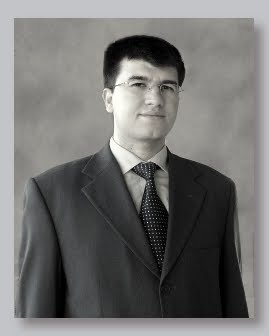
Dr. Mete received his Ph.D. in Applied Science, emphasizing Applied Computing, from University of Arkansas at Little Rock (UALR) in 2008. After his doctorate studies, Dr. Mete joined BioTeam of IT Research at University of Arkansas for Medical Sciences (UAMS). He was invited to teach in UALR/UAMS Joint Graduate Program in Bioinformatics, where Dr. Mete taught Introduction to Bioinformatics. He joined the TAMU-Commerce family in Fall 2009. His research interests lay in Medical Imaging, Computer Vision in Cancer Research, Clustering in Multidimensional Data, Knowledge Discover in Microarrays, System Level Network Analysis, Non-linear Time Series Prediction, and Color Models. His current research is supported by TAMU Graduate School and National Institute of Health. More information about Dr. Mete and his research can be found at http://faculty.tamuc.edu/mmete/
Abstract:
Biological systems can be modeled as complex network systems with many interactions between the components. These interactions give rise to the function and behavior of that system. One goal of emerging systems biology is to analyze very large complex biological networks such as protein-protein interaction networks, metabolic networks, and regulatory networks to identify functional modules and assign functions to certain components of the system. Network modules do not occur by chance, so identification of modules is likely to capture the biologically meaningful interactions in large-scale PPI data. Unfortunately, existing computer-based clustering methods developed to find those modules are either not so accurate or too slow. We devised a new methodology called SCAN (Structural Clustering Algorithm for Networks) that can efficiently find clusters or functional modules in complex biological networks as well as hubs and outliers. We showed the effectiveness of our methodology using the budding yeast (Saccharomyces cerevisiae) protein-protein interaction network. To validate our clustering results, we compared our clusters with the known functions of each protein. Our predicted functional modules achieved very high purity comparing with state-of-the-art approaches. Additionally the theoretical and empirical analysis demonstrated a linear running-time of the algorithm, which is the fastest approach for networks.
To request a change to this page or to request access to make changes yourself, email helpdesk@tamuc.edu.

